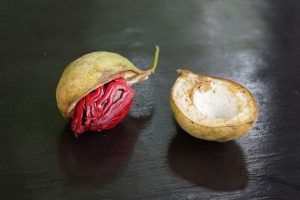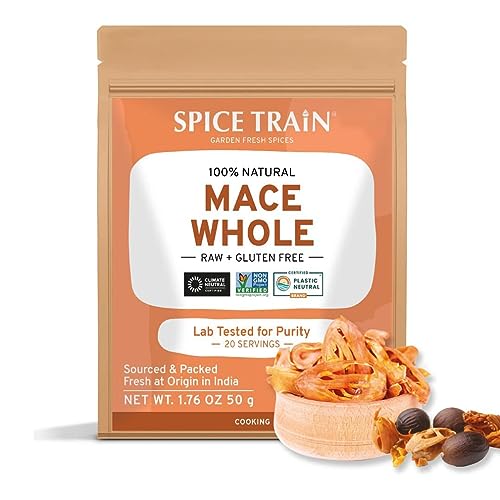What is the best Mace substitute?
Are you looking for mace substitutes? When you’re in need of a substitute for mace, nutmeg is your best friend in the kitchen. They’re closely related, as mace is actually the outer covering of the whole nutmeg seed. However nutmeg has a similar warm and aromatic flavor so that makes it a good substitute for mace. Just keep in mind that nutmeg is more potent than mace, so you should use it in smaller quantities. Alternatively, you can use a combination of cinnamon and a pinch of allspice as a makeshift mace substitute. These alternatives can work wonders in your recipes when you’re out of mace. Looking for something else? So, here is our list of possible substitutes for you to choose from. Try using: Nutmeg, Allspice, Cinnamon, Cloves, Pumpkin Pie Spice, Cardamom, or Ginger.
Remember that the exact substitute you choose will depend on what you are preparing and your personal taste preferences.
What is Mace?
Mace is a fantastic spice when you want to add a warm and slightly sweet flavor to your dishes. It’s actually the outer covering of the nutmeg seed, and it comes in the form of dried, reddish-brown lacy arils. Once the crimson-colored aril is removed from the nutmeg seed it goes through a 10-14 day drying process. The color naturally develops into either pale yellow, orange, or tan depending on the length of the drying.
What does mace do in a recipe? Well, you can use mace in both sweet and savory recipes when you want to add a subtle hint of warmth. In sweets, it’s excellent for spicing up desserts like pies, puddings, and cookies. It also works well in savory dishes, such as soups, stews, and even some meat marinades. Mace has a unique taste that’s a bit more delicate than nutmeg, so it’s worth experimenting with in your cooking.
Here are some roles mace plays in cooking:
- Enhances Flavor: Mace brings a complex, aromatic depth to both sweet and savory dishes. It can elevate the taste of baked goods, soups, stews, and sauces.
- Warmth and Sweetness: Its warm and slightly sweet notes complement spices like cinnamon, nutmeg, and cloves, adding balance and richness.
- Aromatics: Mace imparts a pleasant, aromatic fragrance to dishes, making it ideal for festive and comforting recipes.
- Color: Ground mace has a reddish-brown color, which can add a subtle hue to dishes.
If you’re looking for a substitute, nutmeg can be a good option, but use it sparingly as it’s more potent.
Okay, before we look at your mace substitute options, let’s deal with that empty cupboard situation!
Where can I buy Mace?
If you want to be more prepared and ensure you don’t run out of mace, then you should stock up now.
Nowadays, most delicatessens and general supermarkets stock a wide variety of mace. Or if you prefer you can also purchase mace on-line.
So why not jump on and place your order today.
STOCK UP NOW!
100% whole Mace full of warm and slightly sweet flavors. Ethically sourced from sustainble growers based in India.
Non-GMO and gluten-free.
What can I substitute for Mace?
Here are some of the best ingredients to substitute the flavor and role that mace provides in your recipes.
- Nutmeg
- Allspice
- Cinnamon
- Cloves
- Pumpkin Pie Spice
- Cardamom
- Ginger
Mace substitutes
Nutmeg
Can you substitute nutmeg for mace? Is mace just nutmeg? Well, mace and nutmeg actually both come from the same nutmeg seed, with mace being the outer covering and nutmeg the inner seed. Nutmeg has a similar warm and slightly sweet flavor, making it an excellent replacement. When using nutmeg as a substitute for mace, keep in mind that it’s more potent, so you’ll want to use it in a 1:1 ratio. Whether in sweet dishes like pies and custards or savory recipes like soups and stews, nutmeg can add a delightful flavor.
If possible, use fresh nutmeg. You can grate it with a fine grater or use a microplane to get the best flavor. Just remember that freshly grated nutmeg has a more intense and aromatic flavor.
Since nutmeg is more potent than mace, use it in a 1:1 ratio. So, if your recipe calls for 1 teaspoon of mace, then you should use 1 teaspoon of freshly grated nutmeg instead.
Just add the grated nutmeg to your recipe as you would with mace. Nutmeg works well in both sweet and savory dishes. It’s a fantastic addition to baked goods like pies, custards, and cookies, as well as in savory dishes like soups, stews, and meat dishes.
Always taste your dish as you go along, especially if you’re using nutmeg as a mace substitute for the first time. You can always add a bit more if you want a stronger nutmeg flavor, but remember that a little goes a long way.
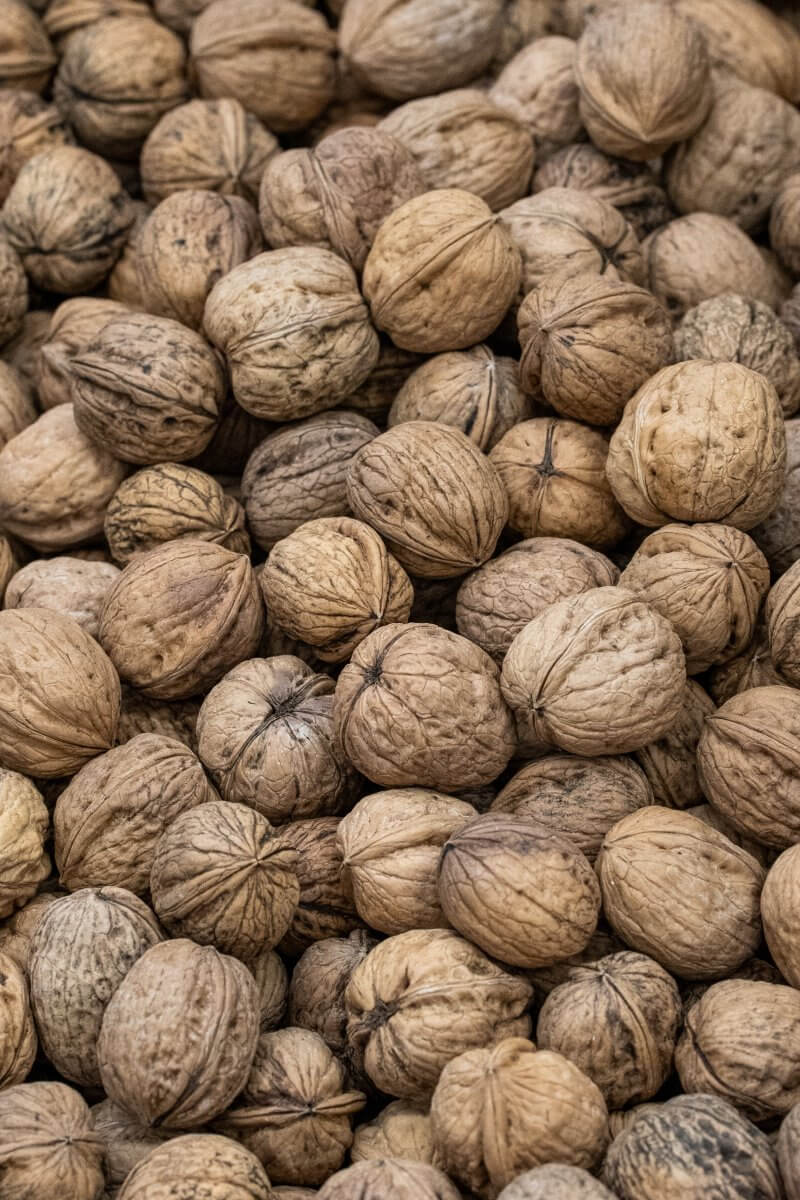
Allspice
Are mace and allspice the same? Allspice is a unique spice that comes from the dried berries of the Pimenta dioica tree, which is native to Central and South America. It’s actually named “allspice” because it has a flavor profile that combines elements of several other spices, such as cinnamon, nutmeg, and cloves. It has a warm, sweet, and slightly peppery taste, making it a great ingredient in both sweet and savory dishes.
Allspice can be a suitable substitute for mace in many recipes. Start by using it in a 1:1 ratio. So if your recipe calls for 1 teaspoon of mace, replace it with 1 teaspoon of allspice. (We actually recommend using a small amount to start and then add more if required.)
Remember to keep in mind that allspice has a slightly different flavor compared to mace. It’s a bit peppery and more complex. Always taste your dish as you go along to ensure it aligns with your flavor preferences.
Allspice works well as a mace substitute in dishes where its warm and sweet profile complements the other ingredients. It’s great for spice cakes, fruit-based recipes, and certain savory dishes like stews and marinades. It is even used as an ingredient in commerical sausafe stuffings. It is also added to Caribbean cuisine, such as Jerk chicken and Empanadas.
Allspice has a distinctive flavor which can add a depth and complexity to your dish that may be different from using mace but it will be just as equally delicious.
Remember that while allspice can be a great substitute for mace, it will give you a unique taste to your recipes.
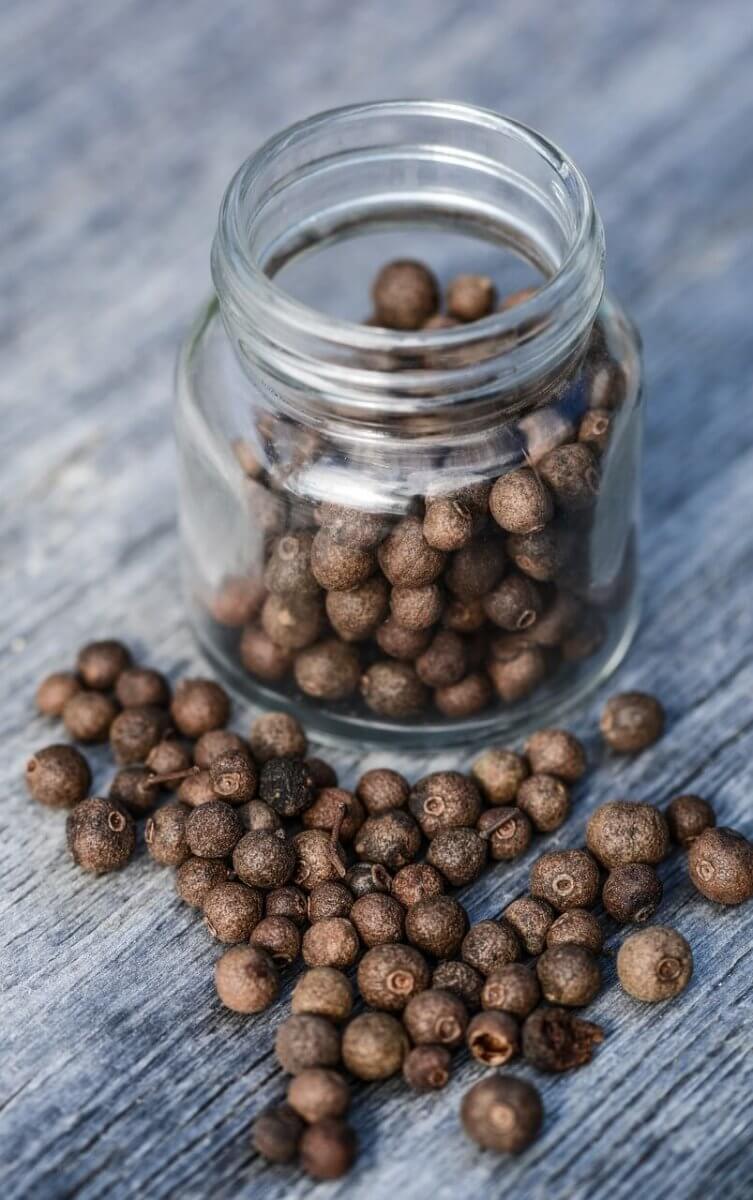
Cinnamon
Cinnamon is a popular spice which is actuall obtained from the inner bark of various tree species belonging to the Cinnamomum family. It has a warm, sweet, and slightly spicy flavor, making it a great addition to both sweet and savory dishes.
Cinnamon can be a suitable alternative to mace in many recipes. Just start by using it in a 1:1 ratio. So, if your recipe calls for 1 teaspoon of mace, simply replace it with 1 teaspoon of ground cinnamon.
Cinnamon works particularly well in sweet recipes. It’s a great substitute in baked goods like pies, muffins, and cookies. It’s also fantastic in hot beverages, like spiced coffee or hot chocolate. Think of those lovely Halloween warmers.
Keep in mind that while cinnamon shares some flavor similarities with mace, it has its distinct taste. It’s definitely sweeter and spicier, so always taste your dish as you go along to ensure it matches the flavors you are looking for.
Enjoy the warm and comforting flavor that cinnamon adds to your recipes. While it may not be an exact replacement for mace, it can still enhance your dishes with its own delicious profile.
Cinnamon is a versatile spice, and it can work wonders in your recipes, especially those with a dessert or warm, spiced flavor profile.
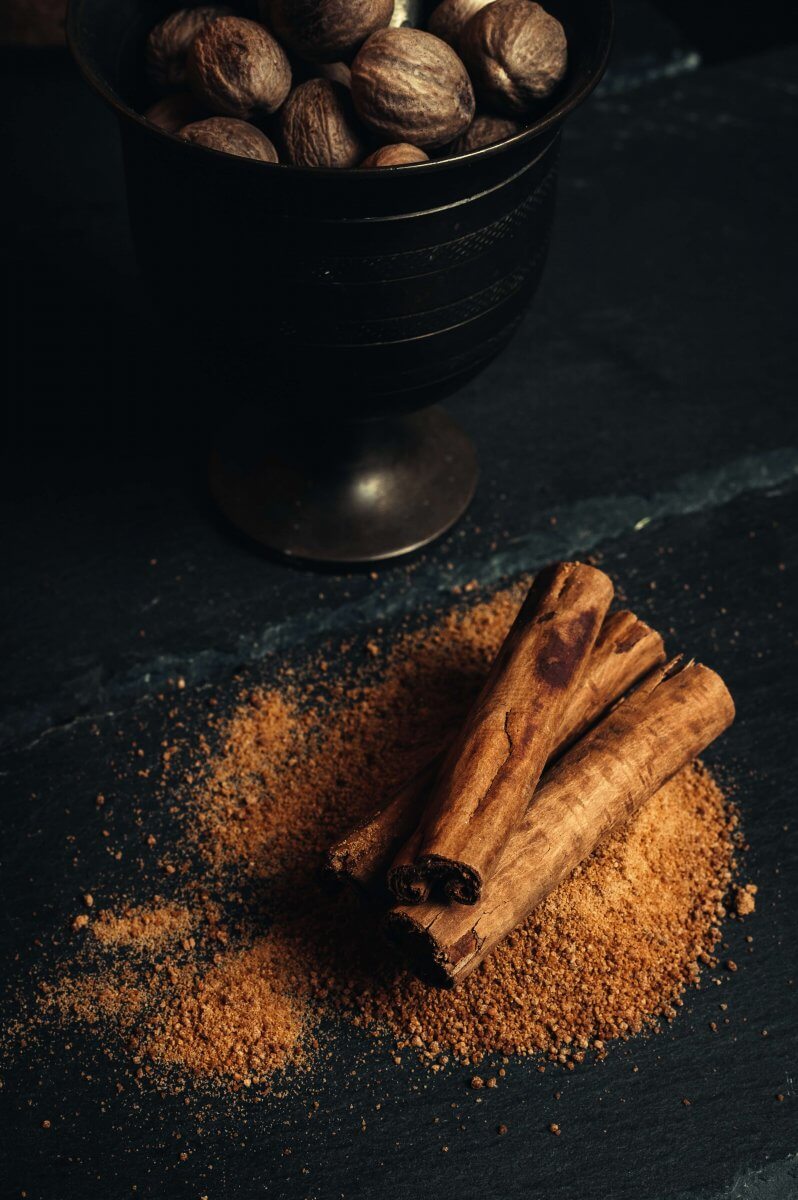
Cloves
Cloves are aromatic flower buds that are harvested from the clove tree. They are known for their strong, sweet, and pungent flavor. Cloves are often used in both sweet and savory dishes and can serve as a substitute for mace in certain recipes.
Start by grinding or powdering whole cloves. You can do this using a spice grinder or a mortar and pestle. Or for convenience, you can buy jars of ready-made powdered cloves. However, freshly ground cloves will have a more intense flavor.
Cloves have a potent flavor, so you should use them sparingly. Typically, you can use 1/2 to 3/4 teaspoon of ground cloves for every 1 teaspoon of mace in your recipe.
Cloves work best as a substitute for mace in savory dishes or recipes where their strong, sweet, and slightly spicy flavor complements other ingredients. They are suitable for soups, stews, roasts, and spice rubs.
As with any spice substitution, remember to taste your dish as you go along to ensure the flavor is what you are looking for. If you aren’t careful cloves can quickly overpower a dish, as a little goes a long way.
Embrace the distinctive warmth and spiciness that cloves bring to your recipe. While they may not replicate the exact flavor of mace, they can still add a delicious twist.
Remember that cloves have a unique, intense flavor, so it’s important to use them sparingly as a mace substitute.
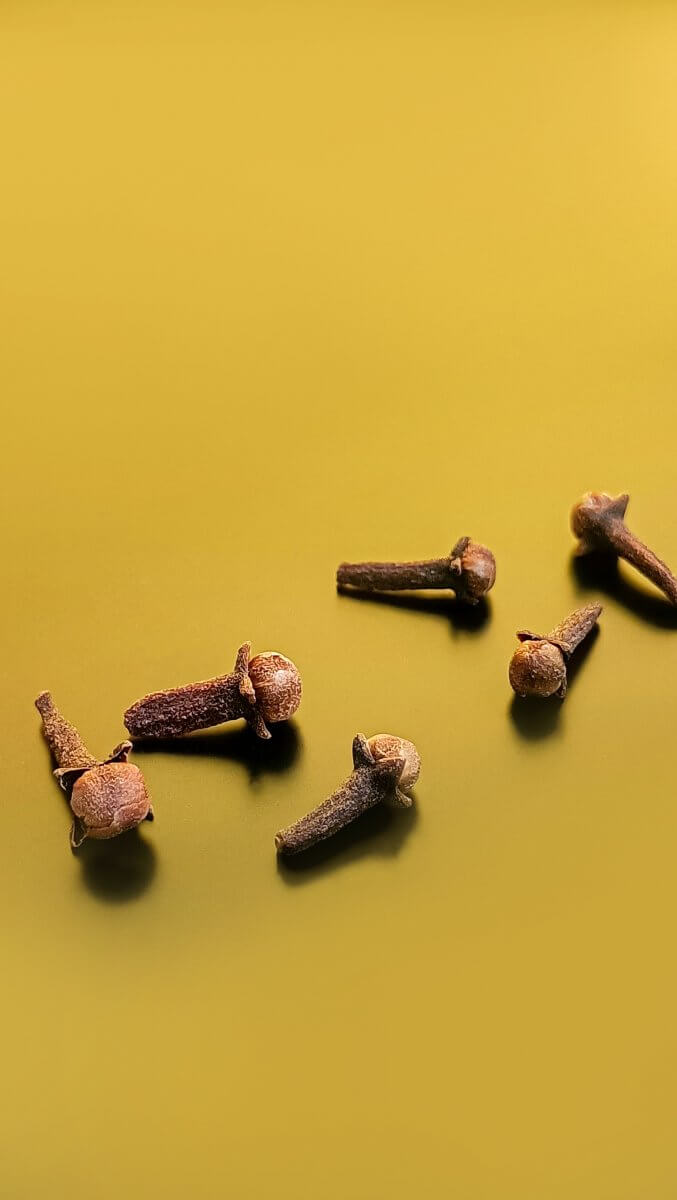
Pumpkin Pie Spice
Pumpkin pie is a classic American dessert typically made with a spiced pumpkin filling in a pie crust. The filling often includes pureed pumpkin, sweeteners like sugar or maple syrup, and a blend of warm spices, including cinnamon, nutmeg, ginger, and cloves. It’s a delicious treat enjoyed during the fall and Thanksgiving season.
Pumpkin pie spice is a pre-mixed spice blend commonly available in stores. It already contains a combination of spices, including cinnamon, nutmeg, ginger, and cloves.
Ensure that the pumpkin pie spice you have includes mace among its components. Most do, but it’s always good to double-check.
Use the pumpkin pie spice in a 1:1 ratio as a mace substitute. So, if your recipe calls for 1 teaspoon of mace, replace it with 1 teaspoon of pumpkin pie spice.
Keep in mind that pumpkin pie spice has a broader spice profile than just mace, so it might have a slightly different flavor. And remember to always taste your dish as you go along to make sure it suits your preferences.
Embrace the complexity of flavor that the pumpkin pie spice adds to your recipe. It should bring the warm, spiced notes of mace along with the richness of other spices.
Pumpkin pie spice can be a convenient and flavorful option for substituting mace in your recipes, particularly in baked goods, and of course, in pumpkin pie itself. It’s an easy way to capture the essence of fall spices in your dishes.

Cardamom
Cardamom is a fragrant spice made from the seeds of plants in the Zingiberaceae family, which is actually related to ginger. It has a unique and complex flavor that combines elements of citrus, mint, and warm, aromatic spices. You can use it in both sweet and savory dishes and it can be an interesting substitute for mace in certain recipes.
Ground cardamom is the most convenient form for use in recipes. You can buy it pre-ground or you can grind whole cardamom pods yourself.
Cardamom has a distinct and slightly citrusy flavor, so it can work as a substitute for mace in some recipes. Typically, you just need to use 1/2 to 3/4 teaspoon of ground cardamom for every 1 teaspoon of mace in your recipe.
Cardamom works well in dishes where its unique flavor complements other ingredients. It can be a good substitute for mace in desserts like spiced cakes, cookies, or fruit-based recipes.
Cardamom has a different flavor profile compared to mace, so remember to taste your dish as you go along to ensure it is just how you like it. It has a bright, citrusy note that can be delightful.
Embrace the complex and aromatic flavor that cardamom brings to your recipe. And while it may not be a direct match for mace, it can still add a delicious twist to your culinary creation.
Remember that cardamom’s citrusy and aromatic qualities can make it a refreshing and unexpected substitute for mace, especially in recipes where the unique flavor complements the other ingredients.
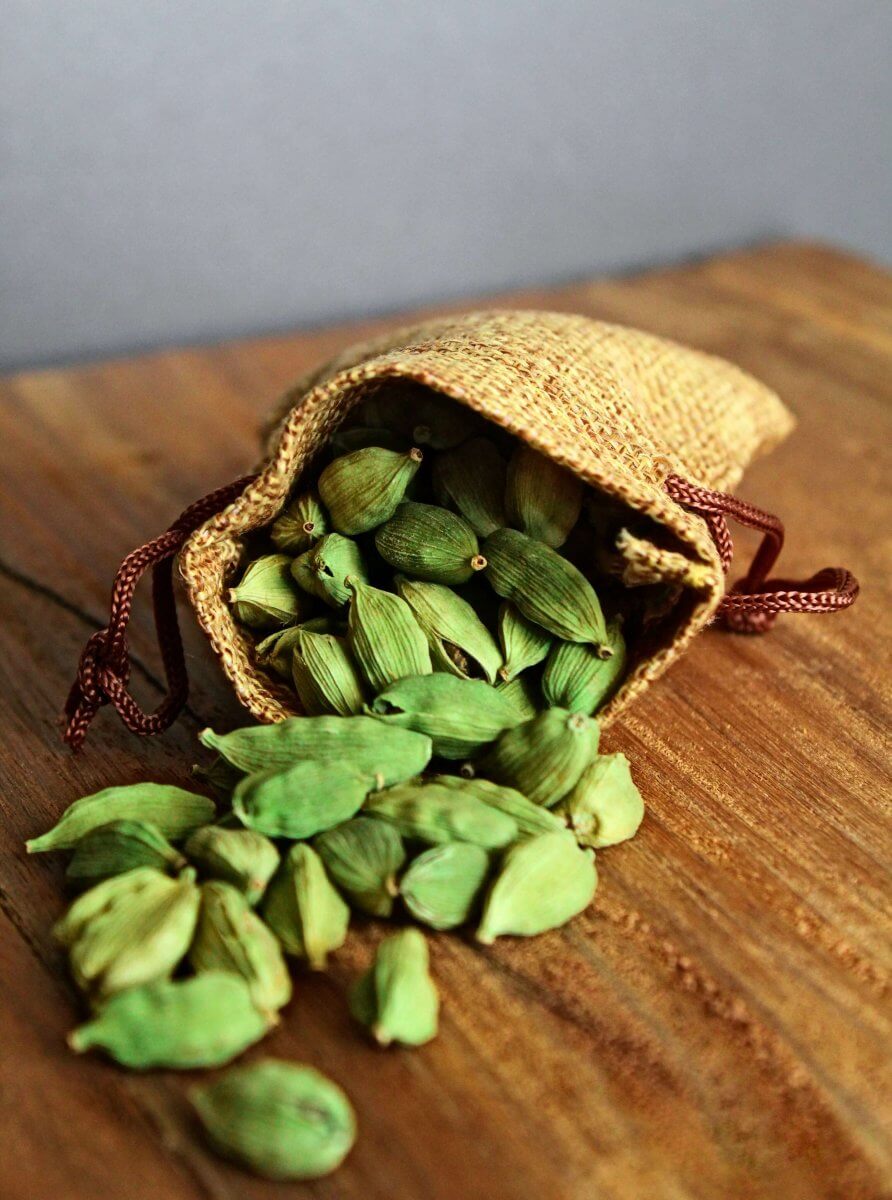
Ginger
Ginger is a versatile spice derived from the root of the Zingiber officinale plant. It’s known for its warm, slightly spicy, and subtly sweet flavor with a hint of citrus. Ginger is used in a wide range of culinary applications, from sweet to savory dishes, and it can be a suitable substitute for mace in certain recipes.
Ground ginger is the most common form used in recipes, and it’s readily available in most spice sections at the grocery store. Since ginger has a spicier and slightly different flavor compared to mace, use it in a 1:1 ratio as a mace substitute. If your recipe calls for 1 teaspoon of mace, replace it with 1 teaspoon of ground ginger.
Ginger can be used as a substitute for mace in recipes where its warmth and spiciness complement the other ingredients. It’s suitable for both sweet and savory dishes, such as in baked goods, soups, stir-fries, and marinades.
Remember that ginger has a spicier and more intense flavor than mace, so taste your dish as you cook to ensure it tastes just how you like it.
Embrace the spicy warmth that ginger adds to your recipe. While it may not replicate the exact flavor of mace, it can still enhance your dishes with its own unique profile.
Ginger’s distinctive spicy and slightly sweet notes can make it an interesting substitute for mace, especially in recipes where these flavors complement the other ingredients.
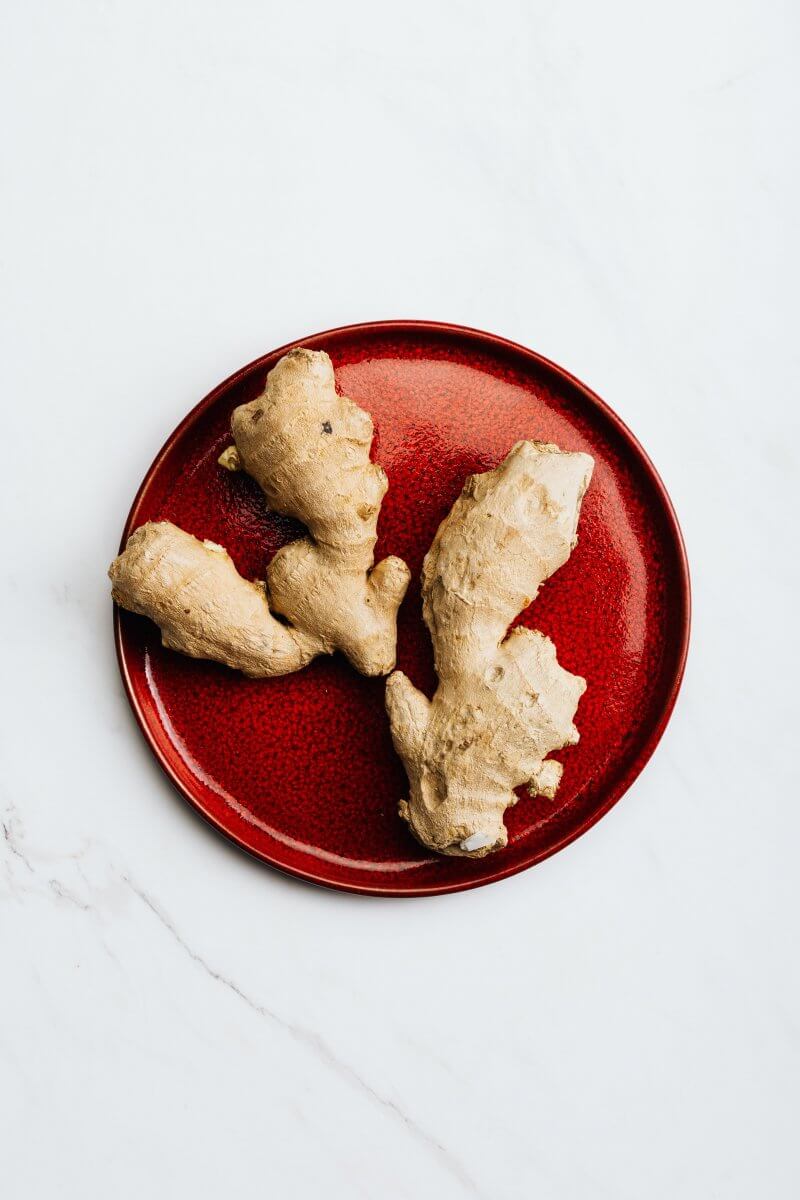
FAQs
Using mace in recipes?
Mace adds a warm, fragrant, and slightly sweet flavor to recipes. It’s similar to nutmeg but with a more delicate, subtle, and nuanced profile. Here are some roles mace plays in cooking:
- Enhances Flavor: Mace brings a complex, aromatic depth to both sweet and savory dishes. It can elevate the taste of baked goods, soups, stews, and sauces.
- Warmth and Sweetness: Its warm and slightly sweet notes complement spices like cinnamon, nutmeg, and cloves, adding balance and richness.
- Aromatics: Mace imparts a pleasant, aromatic fragrance to dishes, making it ideal for festive and comforting recipes.
- Color: Ground mace has a reddish-brown color, which can add a subtle hue to dishes.
Mace is often used in spice blends, baked goods (like cakes and cookies), meat dishes, soups, and sauces. Its versatility makes it a valuable spice in the kitchen.
Health benefits of mace
Mace offers several health benefits due to its rich nutrient profile and bioactive compounds. We have listed below some of the main health benefits but remember it should be used in moderation, as excessive consumption can lead to adverse effects. You can use mace in moderate amounts in daily cooking and if used thoughtfully and in moderation, mace can be a delightful and healthful addition to your daily cooking routine.
- Digestive Health: Mace has been traditionally used to aid digestion. It can help alleviate indigestion, gas, and bloating due to its carminative properties, which reduce the formation of gas in the gastrointestinal tract.
- Anti-inflammatory Properties: The compounds in mace have anti-inflammatory effects, which can help reduce inflammation in the body and potentially alleviate conditions like arthritis and other inflammatory disorders.
- Antioxidant Effects: Mace contains antioxidants that help combat free radicals, protecting cells from damage and reducing the risk of chronic diseases like heart disease and cancer.
- Pain Relief: Mace has been used for its analgesic properties, helping to relieve pain, including headaches and muscle aches.
- Improved Circulation: The spice can help improve blood circulation, which is beneficial for cardiovascular health and overall vitality.
- Oral Health: Mace has antibacterial properties that can help maintain oral health by reducing harmful bacteria in the mouth.
- Mood Enhancement: Some traditional uses of mace include its role in reducing anxiety and improving mood, likely due to its soothing aroma and potential impact on neurotransmitter activity.
- Immune Support: The antimicrobial properties of mace can help support the immune system by fighting off infections and boosting overall immunity.
Always consult with a healthcare provider before using mace for medicinal purposes, especially if you have underlying health conditions or are taking other medications.
Is mace the same as mixed spice?
Actually no, mace and mixed spice are not the same, although they share some flavor characteristics and can sometimes be used in similar culinary contexts. As mentioned before mace is the dried outer covering of the nutmeg seed. It has a warm, sweet, and slightly peppery flavor, similar to nutmeg. Mixed Spice on the otherhand is a blend of several ground spice. Typically spices like cinnamon, nutmeg, allspice, cloves, ginger, and sometimes coriander and caraway are used to create the blend. This creates a warm, sweet, and aromatic flavor due to the combination of spices.
If a recipe calls for mixed spice and you only have mace, you can use mace along with other spices like cinnamon, nutmeg, and cloves to mimic the flavor of mixed spice. Conversely, if you need mace and only have mixed spice, you can use mixed spice but expect a more complex flavor.
Summary for Mace substitutes
Okay – that’s you all sorted with suitable substitutes for mace.
Is there something on the list that you would like to use? Here’s a quick recap:
- Nutmeg: This is the closest substitute since mace and nutmeg come from the same seed. Use nutmeg in a 1:1 ratio as a replacement for mace. Use approximately 1/4 teaspoon ground nutmeg for every 1/4 teaspoon ground mace.
- Allspice: Allspice has a warm, sweet flavor that can mimic mace. Allspice combines notes of cinnamon, nutmeg, and cloves, while mace is more delicate and similar to nutmeg. Depending on the recipe, you might want to start with a slightly smaller amount of allspice and adjust to taste.
- Cinnamon: While not an exact match, cinnamon can add a warm and slightly sweet flavor to your dishes. It works well as a mace alternative, especially in desserts.
- Cloves: Ground cloves can bring a warm, spicy flavor, somewhat similar to mace. Use it sparingly, as cloves are quite strong in flavor.
- Pumpkin Pie Spice: If you have this spice blend on hand, it can work as a convenient substitute for mace, as it often includes spices like cinnamon, nutmeg, and allspice.
- Cardamom: Ground cardamom has a unique, slightly sweet flavor with a hint of citrus. It can be used as a mace substitute in some recipes, particularly in baked goods.
- Ginger: Ground ginger can add a mild, warm flavor to your dishes and may be used as a mace alternative, especially in savory recipes.
We have gathered together a lot more facts on ingredients such as herbs, spices, oils, nuts, etc. if you would like to learn some more.
Or if you need to swap out another ingredient have a look at our Substitutes section.
